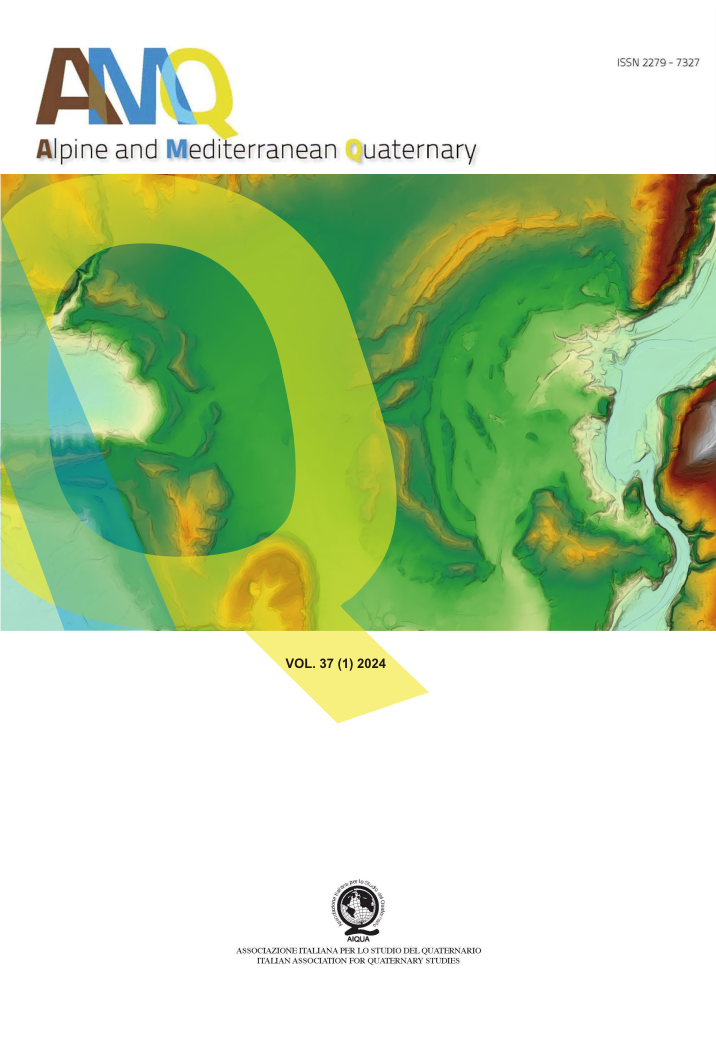Anthropogenic morphological modifications in Turin along the Po, Sangone and Dora Riparia rivers (NW Italy)
Main Article Content
Abstract
Geomorphological mapping in urban areas must address the wide distribution of anthropic landforms and deposits in addition to the natural landforms and deposits. Consequently, an integrated scientific approach, by combining field surveys and subsoil data with the use of historical documents, is necessary to recognize the main anthropic modifications of the natural landscape over time.
Recent field research concerning the morphology and subsoil stratigraphy of Turin, especially through the study of several boreholes, has led to the recognition of various anthropic modifications of the Turin natural landscape and shallow subsoil stratigraphy that have occurred in the last four centuries. Moreover, the examination of ancient papers and historical maps, with reported sectors in which the morphology of Turin appears different from the current one, indicated some evident, partly anthropic, modifications.
Anthropic changes deduced essentially from ancient topographic maps have been related to the trend of riverbeds, such as the stabilisation of the Sangone R. meander near the Miraflores Castle, the setting and deletion of the Nichelino meander, the shift of the Sangone-Po rivers confluence and the deletion of the wide meanders of the Dora Riparia R. near its confluence with the Po R., to allow the expansion of the monumental cemetery. Other significant anthropic river modifications that have been difficult to identify concern the filling of several ancient tributary incisions on the left of the Po R., which have now completely disappeared.
Anthropic modifications deduced essentially from field surveys regard wide sectors of southern Turin, Rivalta and Beinasco, which consisted of ancient clay quarries, associated with several brick-kilns, in which the surface was lowered through the removal of the clayey silt overbank cover of the Turin Unit.
Areas in which the landfill has substantial thickness and extension such as to simulate natural river terraces were also recognized, evidenced by the observations of borehole cores coupled with the radiocarbon dating of the underlying fluvial deposits, such as the long stretch between the Palazzo del Lavoro and the Balbis Bridge.
Surface surveys alone are sufficient to recognize the areas involved by substantial anthropic interventions when they are characterized by hummocky morphology such as in the Valentino Park and the Cavour Garden. Finally, anthropic modifications deduced essentially from historical reports consist of as the construction and filling of the Michelotti Channel along the right riverside and the use of the Po banks and sand of the Vallere Unit by bathing establishments.
The progressive building of Turin was closely related to the natural evolution caused by geomorphic agents (above all erosional and/or depositional processes carried out by watercourses) but also by anthropic modifications of the topographic surface (excavations and/or fillings). The investigated anthropic modifications of the Turin landscape are therefore useful to both the scientific approach and the use of urban subsoil for application purposes.
Article Details
Issue
Section

This work is licensed under a Creative Commons Attribution-NonCommercial-NoDerivatives 4.0 International License.
The Author grants usage rights to others using an open license (Creative Commons or equivalent) allowing for immediate free access to the work and permitting any user to read, download, copy, distribute, print, search, or link to the full texts of articles, crawl them for indexing, pass them as data to software, or use them for any other lawful purpose.

